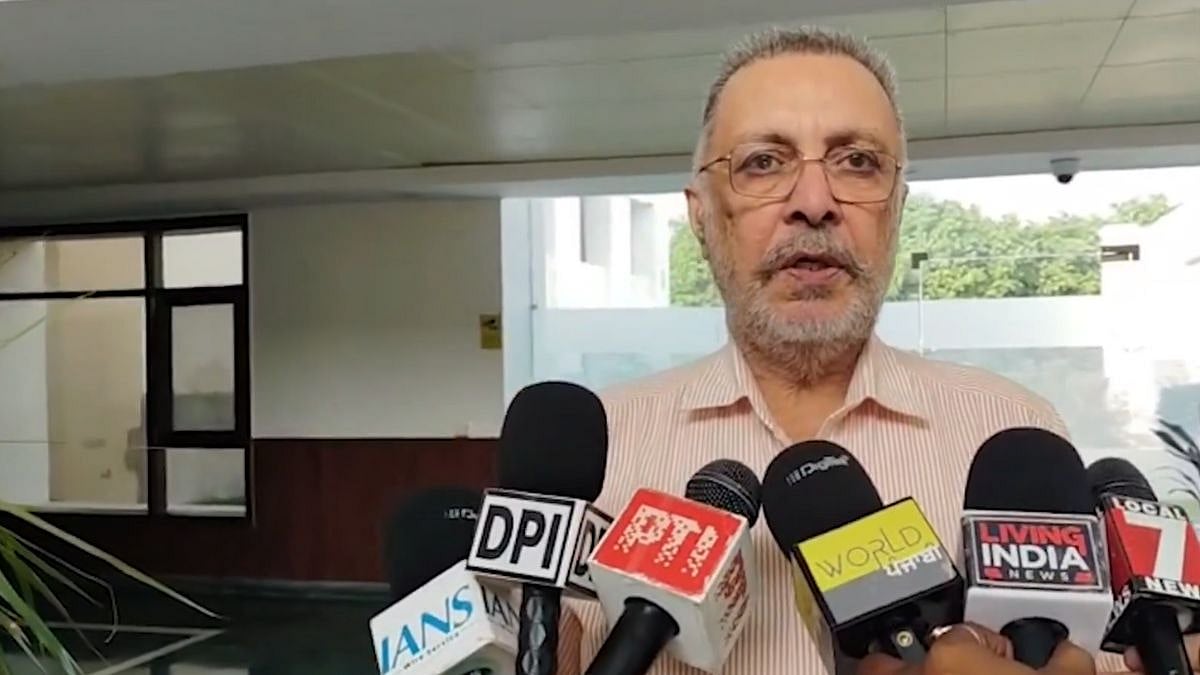“You don’t cast your vote in Bihar, you vote your caste,” goes an aphorism that has been popular in the eastern state of India since, at least, the early ‘80s — the period that saw regional identities getting sidelined to make way for caste-based politics. As the dates for the Bihar Legislative Assembly Election 2020 inch closer, the state once again stands on the dock, answering a myriad of questions thrown up by the region’s complex caste-identity political matrix.
For the uninitiated, it would help to know that Bihar’s politics, post-independence, can be carved out neatly into four broad phases: Congress era (1950-1975), Jayprakash Narayan’s Bihar Movement (1975-1990), the rise of Lalu Prasad Yadav and the Janata Dal (1990-2004), and finally the Nitish Kumar years (2004-). Shortly after the notion of “total revolution” led by Jayprakash Narayan started fading away, the period of 1980s witnessed a remarkable change in the political scenario of Bihar.
Since the state’s regional identity was slowly getting sidelined, its place was taken up by caste-based politics. Power initially remained in the hands of the Brahmins, the Bhumihars, the Rajputs, and the Kayasthas, of course, but from the second half of the decade, the state witnessed the intensifying militancy of the backwards castes. With the rise of 'Mandal' politics, when Bihar was plunged in chaos over anti and pro-reservation protests, backward castes started asserting themselves.
The Mandal movement
Eventually, riding upon a wave of “social justice”, three distinct middle OBC (Other Backward Class) groups — the Yadavs, the Kurmis, and the Koeri — successfully replaced the upper castes at the highest political level. The post-Mandal politics also saw the rise of Dalit leaders, like Ram Vilas Paswan and Jitan Ram Manjhi who represented the 'Mahadalits', considered lowest in the caste hierarchy. The contemporary political scene, as people knew it in Bihar, was getting a monumental makeover in the early ‘90s. And at the forefront of it all was one enigmatic leader, Lalu Prasad Yadav.
The rise and fall of Lalu Prasad Yadav
In many ways, the meteoric rise and fall of Lalu in Bihar is the tale of a secular champion who ran out of tricks. When the Janata Dal came to power in the state in 1990 on the back of its victory at the national stage and Lalu Prasad Yadav became the Chief Minister of Bihar, he was but a young legislator with potential. Within a few years, though, it seemed like Lalu had done the impossible — not only prevailed over upper castes but equally importantly, managed to keep the state away from violent outbursts of communalism.
The ace up his sleeve, in this case, was successfully bringing Muslims (who represented around 16% of the population at the time) and Yadavs together in a political alliance. The Muslim-Yadav parley sailed Lalu’s ship in the Rashtriya Janata Dal (RJD) for a good while, but unfortunately, wasn’t a formula for lasting success. In portraying himself as the “Garibo Ka Masiha” (literally, the “Messiah of the downtrodden”), Lalu may well have ostensibly restored the “ijjat” (honour) of the Dalits or become the voice for those who were silent for long, but his economic populism and identity politics also paved the road, ironically, for his eventual downfall.
His continuous rhetoric of lambasting the oppressors on behalf of the oppressed made him a hate figure among the Forward Castes. Not only did the bureaucracy suffer due to caste polarisation, but as well due to the politicisation of personnel transfers and deinstitutionalisation. Short-sighted populist welfare schemes proved incapable of bringing any long-term reform.
Added to it all was a weakened bureaucracy, which led to a rapid rise in crime and extensive corruption. Himself being involved in the infamous ‘Fodder Scam’, Lalu finally had to abdicate his throne in a fitting fall almost akin to a tragic hero, dismantled by his own hamartia.
Nitish Kumar, the 'vikas purush'
It became immediately apparent, with Lalu Prasad Yadav’s fall, that identity politics in Bihar under the guise of social justice had alienated a few of the other backwards castes like the Kurmis and the Koeris, who became the political rival of the Yadavs. This point is crucial in understanding the emergence of Nitish Kumar and his rallying cry of “politics of development” to fill the vacuum that Lalu’s populism had left behind.
The Mandal movement had left behind a political environment where only a person from a backward community could be thought of as an alternative to Lalu, because the galvanised downtrodden would not accept an upper-caste leader. Nitish Kumar, of the Kurmi community, was initially pitched by Lalu to rally the caste behind him, but eventually, was the one to replace him. Kumar managed to consolidate the forward castes along with non-Yadav OBCs and Extremely Backward Classes (EBCs) like Kurmis, Koeries and the Kushwahas, who had felt the wrath of the Yadavs during the Lalu regime.
Yet Nitish Kumar would not speak a word about caste, instead basing his rhetoric on the aforementioned “politics of development”. This was witnessed during the Lalu tenure as well when Kumar was one of the only few leaders reluctant to speak about caste when everyone around them in the camp were going about flaunting theirs.
According to a report, when he attended a “Kurmi Chetna” rally at the Gandhi Maidan in Patna, there were deafening chants of ‘Garv se kaho hum Kurmi hain’ (“say it with pride, I am a Kurmi”), yet Nitish “did not utter a word on caste”. But across Bihar, Nitish Kumar came to be known as the “Luv-Kush” uniter, the moniker a play on the names of the twin sons of Rama and Sita in the epic Ramayana. In the context of Bihar, “Luv” stood for the Kurmis, and “Kush” stood for the Kushwahas — two OBC castes earlier marginalised by the Yadavs.
The current scenario
This is, evidently, key to examining where the caste-identity matrix in Bihar lies at this point in time. Despite projecting himself as the ‘vikas purush’ (literally, “development man”), Nitish’s hand has only gotten stronger over the years and today he commands a formidable influence among not only the non-Yadav OBCs like the Kurmis and the Koeris, but also among the EBCs like Nishads, Mandals, and Nai-Kahars, and as well as among most of the Mahadalits, except the Paswans, in the state — such as the Chamars, and the Musahars.
While the Forward Castes seem to have shifted to the Bharatiya Janata Party (BJP), generally perceived to be a ‘Baniya’ party, the RJD’s presence is still formed by the Muslims and the Yadavs. The Paswans stand behind the Lok Janshankti Party (LJP), while caste-based parties like the Upendra Kushwaha-led Rashtriya Lok Samta Party (RLSP) or the Nishad-based Vikassheel Insaan Party (VIP), led by Mukesh Sahani, have also emerged.
The equations
As Bihar goes to polls, the National Democratic Alliance (NDA)’s formula of “BJP + JD(U)” looks mighty, it courts a significant section of the population across caste-lines. With their respective support bases already strong, the alliance also enjoys the recent support of the Jitan Ram Manjhi-led faction of the Mahadalit party Hindustani Awam Morcha (HAM).
Reports also indicate that community voters may, in fact, reject their respective caste-based leaders and end up voting for Nitish Kumar since attempts to break away from a traditional core social base is usually looked down upon because it reduces the ‘bargaining power’. Thus, it explains a part of the marginalisation of Upendra Kushwaha or Mukesh Sahani among their very own communities, and why votes from their castes could eventually go to the JD(U)-BJP coalition.
Signalling more trouble for the RJD, there seems to be a few signs indicating that its traditional Muslim voter base, as in the Seemanchal region, may this time side with the newly-emerged All India Majlis-e-Ittehadul Muslimeen (AIMIM), led by Asaduddin Owaisi. On the other hand, the Left parties hold a modicum of a social base across the upper-caste poor, the Mahadalits, the EBC-OBCs, and the Muslims, which is one reason why the RJD-Congress coalition opted to include the Left as well.
Will the NDA’s wide social base eventually railroad the optimistic Mahagathbandhan in the upcoming Bihar assembly elections? In many ways, the polls are a test for traditional fealties, and although opinion polls indicate in its favour, only time holds the final answer.
--
Elections to the 243-seat Bihar Assembly will be held in three phases -- October 28, November 3 and 7 -- and the counting of votes will take place on November 10.
The BJP is contesting on 121 of the total 243 seats in Bihar and ally JD(U) on 122 seats, consisting the ruling National Democratic Alliance (NDA) political group.
On the other hand, the main opposition political group, the Mahagathbandan (Grand Alliance), comprising primarily the United Progressive Alliance (UPA) members RJD and Congress along with left-wing parties is also gearing up for the elections. The RJD is contesting on 144 seats, Congress 70, and the Left parties 29.






